The Lakes of Tatvan
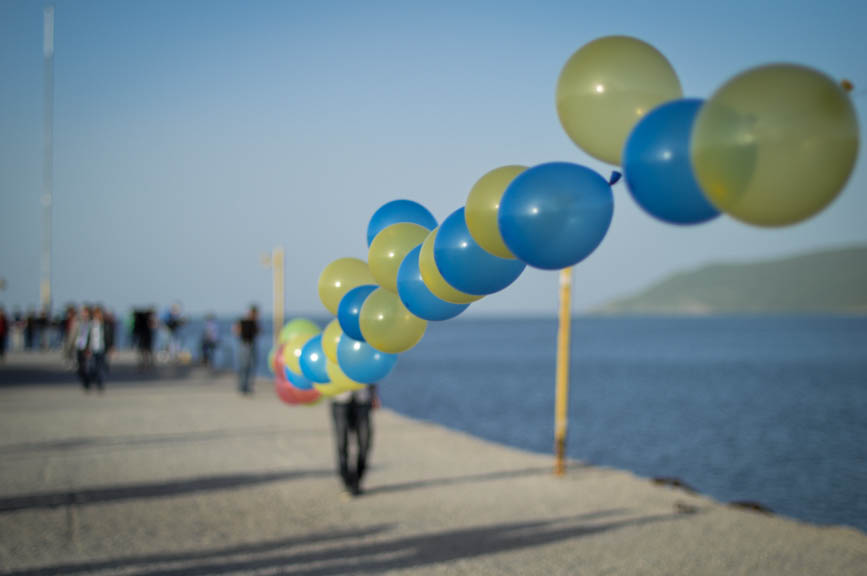
The road from Mardin to Tatvan is a prime example of the diversity in Turkey’s landscape. Travelling through the country, it feels more like 5 countries in one, there are stunning turquoise beaches of the Aegean coast to the west, the nougat ice cream scoop rock formations of Capadoccia in the centre, huge crystal salt lakes in between, desert plains in the south east and the largest lake of Turkey in the far east – Lake Van (Van Gölü or in kurdish: Gola Wanê). The window view of our bus slowly turns from dusty yellow to khaki-green agricultural pastures as we make a quick pitstop in the town of Batman. We did not actually visit the town beyond the bus station, so there is nothing really to report, but I could not resist name-dropping, just to make sure you all know there is a town called Batman in eastern Turkey. As the bus steadily climbs up a rocky canyon, the air clears up, the sand subsides to be replaced by tall pine trees and a rushing river.
The bus slows down in the river-side town of Hasankeyf as marathon runners determined to conquer the sweltering heat pound away at the road. Hasankeyf was not on our original itinerary, but I am incredibly happy to have seen it. In my life before this trip, we had worked with people from The Initiative to Keep Hasankeyf Alive, to help defend the destruction of this ancient town from inundation by the construction of the Ilısu Dam. Hasankeyf is only one of the 200 towns and villages in the Tigris Valley that would be flooded if the construction of the Dam is finished, it would also limit some of the water supply moving downstream to the neighbouring countries of Iraq and Syria. I know that the people of the town and the Initiative have been working hard to save this place that they call home, an area that was ironically declared a natural conservation zone by Turkey in 1981, but I was not prepared for its beauty. Huge rock columns stand proud, jutting out from the centre of the wide river, flanked by imposing cliffs with carved out stone statues and mosques. It is impossible to imagine that the fate of this town would include hiding its treasures forever, buried under violent rushing currents. For more on the background into the fight to save Hasankeyf, you can read an excellent article written by my fellow water justice activist Akgun Ilhan here.
We leave Hasankeyf and continue our climb to 1600m where the narrow plateau housing the sleepy town of Tatvan borders Lake Van. As Turkey’s largest lake, Lake Van has an area of 3755km2 and is 119 km wide at broadest point. It is a saline soda lake and is one of the world’s biggest “endorheic” lakes, as in it does not have an outlet point where water leaves. Tatvan on the southern-west end of the lake, is itself is a little worse-for-wear, having been built in the 19th century to serve the rail road, transporting train cabins by ferry across the lake to avoid building massive tunnels through the mountains; it also does not seem to have recovered fully yet from the drop in tourism in the 90s due to the Turkish-Kurd conflict. It is however a good place to base yourself for visiting Tatvan’s other lake – the crater lake of the extinct volcano Nemrut Dağı.


We settle in and take a sunset walk along the shores of Lake Van. The lake-side promenade is packed with residents enjoying the late-afternoon sun, a golden sheen adorns the calm surface of the water and we immediately warm up to the laid-back vibe this town is oozing. Families are cycling, çay is boiling in the little grass-carpeted cafés lining the pedestrian zone, street food corn is being dished out into paper cups and topped with melted cheese, ice cream is being churned and scooped up for eager teenagers and there is even a little train shuttling people back and forth along the promenade.


Then there are balloons. Strings of multi-coloured balloons are being lowered into the water by the pier and we wonder what for. Turns out a favourite past-time of young locals on the weekend is balloon shooting. A table topped with carefully posed BB-gun rifles awaits those wanting to test their aim, it is sunday target practice time. Mainly men are queueing up to take their shot, but a couple of women try their luck too. As we are preparing to capture a photo of the balloons, someone jumps in front of the camera exclaiming “Selfie! Selfie!” with a thumbs-up and a wide-grin. There is definitely the occasional mis-interpretation of a “selfie” versus “photo-bombing”, but of all the english expressions we have heard in Turkey so far, “Selfie” seems to have won its way to the top of the list. We spend the next half-an-hour taking “selfies” with Gesim and his friends on a little boat moored to the pier. The hospitality of the people of Tatvan immediately shines through as we are offered cups of çay to fuel our “selfie” frenzy.
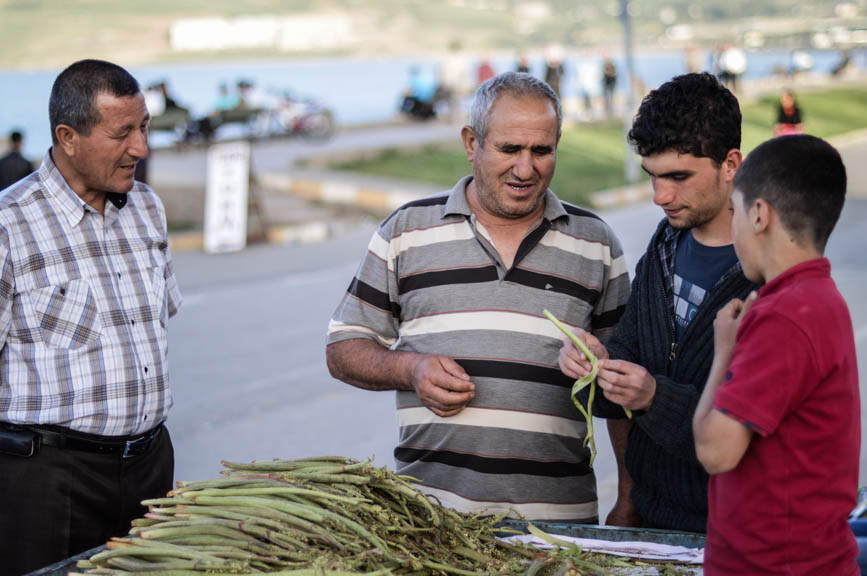
On our walk back to town we come across a fruit or vegetable we have never seen before, looking like a mix between rhubarb and green asparagus, we are offered a taste. Peeling the skin off and chewing the stalk for its juice (much like you would with sugar cane stalks), Yalamuzi definitely seems more like a close relative of the rhubarb, tangy and slightly sweet.
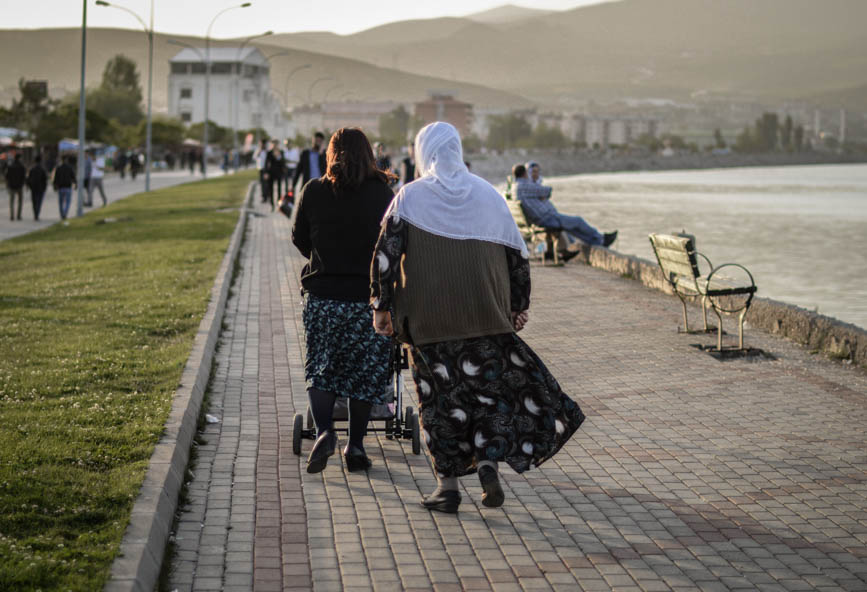
The next morning we set off with our new friend and guide Uhr towards the Nemrut Dağı crater lake. Named after King Nimrod, this dormant volcano is host to the region’s biggest caldera with three crater lakes. We drive up the rough mountain paths to sound of singer Don Omar’s Uno Dos Tres Cuatro, cementing the contrast of the view and the melody forever in my mind. haha
Half a dozen cement trucks appear before us, working hard to build a more sturdy road towards the top. Some of the other paths are being hand-laid, groups of workers carefully arranging bricks before covering them with a layer of sand. Their tractor driver does stop long enough to turn off the engine and ask us “where you are from?” though, the runner up english phrase after the favourite “selfie”.


At the top of the rim, the caldera appears and what a magnificent sight it is. Tall charcoal grey volcanic rock soars up from the turquoise blue waters of Lake Nemrut, also nicknamed the “Blue Lake” for its shade of azure. Wanting to get away from the perfectly built roads we go off the beaten tracks to find a great picnic spot near the sun-lit shores. We are alone.


From there it is easy to get to Lake Ilı, meaning “hot lake” and nicknamed the “Green Lake”. Within the caldera the landscape changes, from the yellow flowers and piled rocks adorning the cobalt shores to the little forest of feather-light moss at the foot of the rim and finally the long wheat-like stalks invading the mirky green waters of Lake Ilı.

Lake Ilı was split from Lake Nemrut by lava flow in the past and still has larger inflows of hot springs in certain corners. We get down to business and relax our tired feet in the warm current of the bay. Right next to the hot spring is a little stone hut with a pot of çay beckoning invitingly at its door. There we meet Faevzi. Faevzi has been living in this small house at the top of Nemrut Dağı for the past few years after having worked in a bookshop in Istanbul for 20 years. We are curious about the reasons for his big change and besides family obligations, he explains the peacefulness of living up here, the deliciousness of the mushrooms he picked on his morning hike and the natural beauty he wakes up to every day. Looking around us, it seems like a very logical decision.

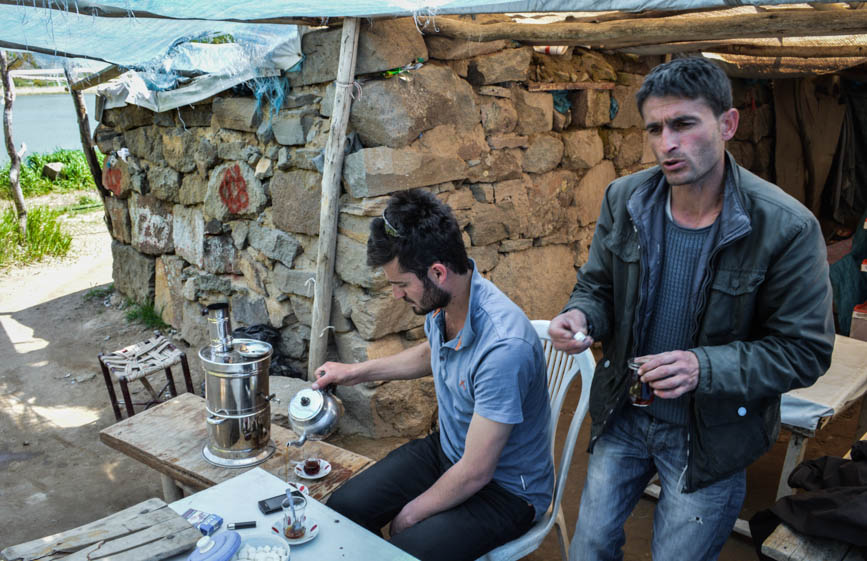
We pick up a few more Kurdish words from Uhr and Faevzi such as “tav” (sun) and “shilly” (rain), how appropriate, as the grey clouds move steadily in, we descend rapidly back to town, just in time for another delicious dinner. In our search for a locantasi (the turkish version of a trattoria and usually where we have had our best “restaurant” food in Turkey) we find a corbaçisi. Corba meaning soup, a corbaçisi is like a locantasi where soup reigns. We had mercimek çorbası, lentil based soup and the mouth-watering kavurma. Trying kavurma for the first time we instantly fell in love, medium-sized lamb chunks boiled until tender, served with tasty pilav (rice). Turkish ekmek (bread) is unbeatable, but it was wonderful to have rice instead.
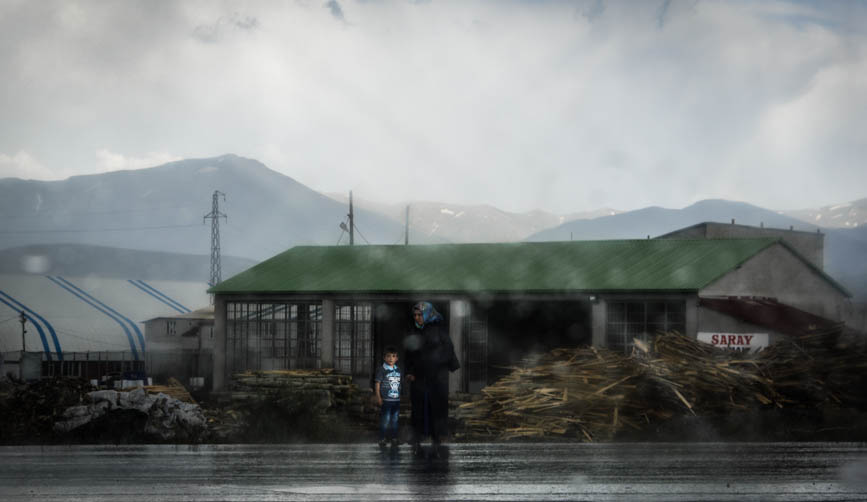
In the morning we rise at the crack of dawn, not wanting to miss the ferry boat to our next destination of Van. As in the olden days, the ferry transport passengers to the other shore, including the Trans-Asia Express which connects Ankara,Turkey with Tehran, Iran. Various sources had told us different times ranging from 7am to 9am, so we decided to go early to be sure. This is one of the evolutions we have seen in Turkey from west to east, until now, our travels have been ridiculously easy, buses run like clockwork, information is clear, but as we move further east, the approach to time becomes more relaxed. The early morning light on the lake was gentle with the city still rousing slowly from its slumber. We arrive at the pier where an ancient ferry is moored. Mmm…not sure this is the right ferry, rusty and looking rather fragile, I am not sure it would survive the 5 hour journey across the lake. We ask the workmen gathered in the little çay evi (teahouse) by the pier when the ferry will leave and the collective answer is “mmm…”. “There may be no ferry because the engine is broken, we don’t know how long it will take,” in the meantime, “sit down and have some çay!”


One thing is for sure in Turkey, no matter where you may find yourself or what may go wrong, there is always one absolute certainty, there will always, be çay.








2 Comments
Orhan Demir
January 18, 2016Most people knows only few cities in Turkey (Istanbul, Bursa, Antalya, Bodrum) but Turkey has too many beautiful cities like Tatvan and others. They are waiting to be explored.
Nico & Gabi
January 23, 2016Very true Orhan, we would even say the best places are the lesser known ones. We absolutely loved the east of Turkey and cannot wait to explore more of this amazing country.